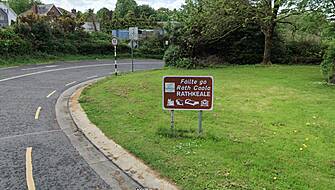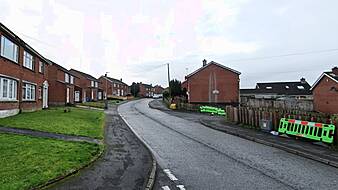A fireman has told the Stardust inquest of finding the bodies of two young victims “fused together” with their "arms around each other" whom he believed were “trying to comfort each other before they met their demise”.
Another witness, a sub officer attached to Tara Street station who was the acting Station Officer working at North Strand on the night of the blaze, described the urgency of the rescue operation as firemen rushed to bring anyone they could find out of the burning building.
“Such [was] the mayhem with the Stardust it was literally a free for all. It was just…get in and get them the hell out of it. That was it,” Brian Parkes said.
“We were just doing rescue, it was 99 per cent rescue all the time.”
Mr Parkes also described finding a “pile of bodies” in a room at the rear of the stage and said he thought at least three or four of them were still alive when he assisted them out of the venue. The firefighter said he believed these were the last people brought out of the Stardust alive that night.
He told the jury at Dublin District Coroner’s Court that later, after most of the bodies had been removed from the building and the fire crews were preparing to leave the site, he found another victim just behind the door of exit five.
The inquest heard on Tuesday from firemen who were involved in rescuing survivors from the venue and who took part in the operation to recover the bodies of the deceased from the club.
Mr Parkes, who had worked as a fireman for 15 years at the time of the blaze which claimed the lives of 48 young people in the early hours of February 14th, 1981, said he left the station in a fire tender at 1.46am.
Mr Parkes told Gemma McLoughlin-Burke BL, a member of the coroner’s legal team, that he and his crew had no information about the fire they were due to attend but said as they made their way to the scene, they could see the flames through the roof.
Crowds
He said when they arrived, there were crowds coming up to the windscreen and “thumping on it” and pointing into the fire to tell them people were inside.
“I remember saying to the driver be careful we don’t knock them down because they were just literally milling around…they were in an awful state,” he said.
He said he was assisting with the rescue operation when he received a report that people were trapped near exit two, and he climbed a ladder and handed in a hose to another fireman.
“Then I got in the window and when I got in I noticed it was a storeroom,” he said. “It was very hot, very smoky, but you could just about make your way in.”
He said another fireman, Noel Hosback, came over with a survivor.
“I just grabbed them and said ‘right come with me’ and I ran backwards down the storeroom, up to the window.”
He said he then “hooshed” them out the window and repeated this three times.
He said by this stage it was still hot, but the smoke had cleared substantially and he could see around. He went back down and Mr Hosback told him everyone was out of the toilets.
Mr Parkes said they went back to where the stage was, and the crew were there hosing down.
“As it began to clear I began to see exactly what was involved, what had happened,” he said.
He said he looked down to a room behind the stage and when he went in, he discovered there was a “pile of bodies” inside.
“The top three or four I should hope were alive,” he said. “I called immediately to the lads and the lads came pouring in and we grabbed them and brought them out.”
He added: “That was the last of the people alive, I think, taken out of the Stardust.”
Closed with chain
Mr Parkes said he then went to exit four and the right-hand door was closed with a chain on it. He said he gave it a kick and it “went flying open”. He said the chain was hanging looped on the bar.
The fireman said they then systematically began to remove the bodies from inside the building. He said this was a difficult job and they had untangle victims from the wires that had come down from the roof. He said the bodies were then lined up outside.
He told how as he was leaving through exit five at the very end of the search operation, he discovered the torso of a victim behind the door and brought it outside to an ambulance.
Asked by counsel how communication was done on the night, Mr Parks said it was “just word of mouth”.
“The lads were experienced; they didn’t have to be told it was a rescue… Such [was] the mayhem with the Stardust it was literally a free for all. It was just…get in and get them the hell out of it. That was it,” he said.
“We were just doing rescue, it was 99% a rescue all the time.”
Evidence was also heard today from fireman James Tormey, who joined the fire service in January 1973.
He told Amy Walsh BL, a member of coroner’s legal team, that when he and his crew got to the scene it was “quite chaotic” .
Taxis
Mr Tormey said there were a large number of young people coming down the road and a lot of taxis heading towards Dublin city centre which he assumed were bringing people to hospital. “So we knew that a serious incident was in play,” the witness said.
He said he immediately put on his breathing apparatus. There were people coming out of exit three “distraught” as they made their way in.
“It was just a total melee..severe panic and distress and people looking for their friends and relatives,” he said.
He said the dance floor was a “massive glow with intense heat” and his ears started to burn because they were the only parts that weren’t covered by his breathing apparatus.
There was no sign of any people trapped in the area, the fireman said, and the heat meant the possibility of anyone surviving would have been very slim.
Mr Tormey told how he assisted in bringing a group of about four or five people from toilets near exit three.
He said he gave his breathing apparatus to a fireman who called for it from a window near exit two and then assisted this firefighter and others in bringing people out of the toilets.
The firefighter also described efforts to pull the bars from windows using a steel rope but said it quickly became apparent that they could not be moved.
He told of finding the body of a victim at one of the exit doors.
He said the torso was wearing a red jumper and a gents watch, and he assumed it was a man. This person was just “two or three steps” away from safety, he told the jury.
Bodies 'fused together'
Mr Tormey also told of finding two bodies “fused together”.
He said they seemed like two young people with “arms around each other and the bodies were fused together as one”.
Mr Tormey said he believed they were “trying to comfort each other before they met their demise”.
Evidence was also heard today from Paul Porter, who had been a firefighter for six years at the time of the Stardust fire.
In his original Garda statement to gardaí in 1981, Mr Porter said he entered exit five with other firemen and went into the toilets which were immediately on the right. He said he took a number of bodies from this area.
“It was pitch dark with smoke and fumes and I don’t know what state the bodies were in,” he said. “I passed them to other firemen who were outside.”
He said he returned to exit five and saw a male lying on the ground fully clothed who appeared to be dead and who he tried to resuscitate with the help from another fireman.
In his direct evidence, Mr Potter said the bodies taken out did not appear to have suffered severe burns.
“I think it was out of the toilets that were along that row. It was very unfortunate there were no windows or no access to communications in that toilet because those people - they weren’t badly burned at all,” he said.
He told the inquest he was wearing a breathing mask at the time, there was little vision and they were working “literally by hand”.
Sean Guerin SC, representing a number of the families of the deceased, showed Mr Potter the location map of where the bodies were found which was prepared by the fire service at the time.
“This map does not indicate that any bodies were found in those toilets,” he said.
He asked the witness if he was confident in his recollection that there were actually dead bodies found in the toilets.
Mr Potter confirmed that he was, adding, “my memory is that we took bodies out of those particular toilets.”
In response to further questions, the witness said he was not one of the firemen involved in the creation of the body map plan. He said it was possible he had been on leave at the time.
Mr Potter confirmed to Gary Maloney BL that his impression was that the people removed from the bathroom at exit five were deceased, but it was possible that they were just unresponsive.
The inquest continues on Wednesday.







